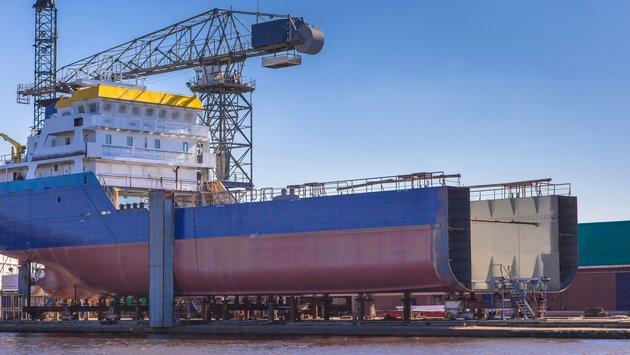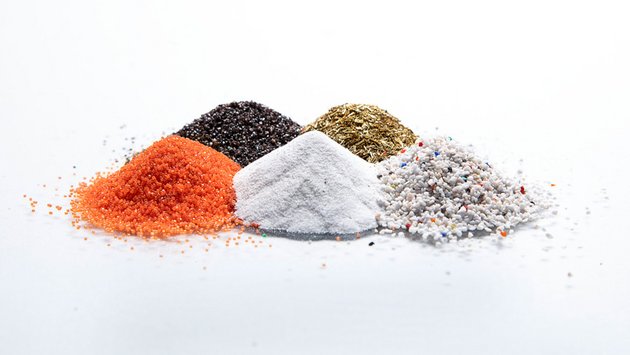
Structural SteelFAQ, Part 2 – Methods Of Surface Preparation
, RoslerUSA - Terug naar overzicht
Structural steel is a widely used material in a variety of industries due to its strength and durability. Our first post in the Structural Steel FAQ series established why this material must be prepared – namely to preserve its strength and longevity. This post will describe the type of surface preparation required before shot blasting structural steel.

In order to stand up to the harsh demands of the construction, shipbuilding, and heavy equipment industries, the most appropriate type of surface preparation must be undertaken to ensure the best shot blasting results possible.
As always, consult a surface finishing expert such as Rosler to discuss your specific components, their condition, and the desired outcome for your structural steel applications.
We turn to another FAQ about structural steel: What type of surface preparation is required prior to shot blasting?
The answer depends on the condition of the component.
Contamination Types

Numerous factors contribute to the presence of contaminants on structural steel components. If not removed before passing through a shot blast machine, contaminants can adversely impact the shot blast and subsequent coating processes.
Common surface contaminants on structural steel and their sources often relate to the manufacturing process, transportation, and storage.
Drilling and cutting compounds, grease, and oil are often intentionally applied during machining or for corrosion protection during transport, especially when transported by sea.
Soluble salts such as chloride, sulfate, and nitrate may be deposited through the atmosphere during transport and outside storage, especially in coastal regions.
Water, dirt, dust, and leaves are also accumulated through transport and storage and are more prevalent in coastal regions and sea transport.
Ice and snow are a common occurrence in colder climates.
Dangers of Poor Preparation
Regardless of the contaminant source, proper removal is imperative to ensure proper surface preparation and prevent problems.
- Problem – If left on the work pieces, grease, oil, and salt deposits create a layer of “smut” on the blast media causing “backside” contamination on the work pieces. Oil and grease carried into a shot blast machine can also cause media clumping or even a catastrophic fire.
Solution – The parts must be washed beforehand with an alkaline cleaner; usually with a spray washer.
- Problem – Water carried into the shot blast machine can cause corrosion of the blast media and the machine. Dirt, sand, and dust will contaminate the blast media affecting the blast results and cause premature wear. Loose leaves will also contaminate the blast media and can even cause a fire.
Solution – Install a blow‐off station in front of the shot blast machine to remove water and any loose contaminants.
- Problem – Ice and snow present on a component will also cause corrosion of the blast media and the shot blast machine.
Solution – The use of a pre‐heater in front of the shot blast machine can melt snow and ice, ensuring that the work pieces do not carry any moisture into the shot blast machine. The pre-heater also serves a dual function, bringing work pieces to the optimum temperature of about 100° F for the subsequent coating process.
Mind Your Media

Even once your work piece is ready for shot blasting, you still need to ensure that the media used by the shot blasting equipment is also free of contaminants.
The working mix of abrasive media in shot blast machines is recycled many times. Along the way it picks up all kinds of dry, loose materials including rust, mill scale, abrasive fines, debris, etc. Continuously removing these materials by cleaning the abrasive media mix is essential to ensure good blast cleaning results.
While fully adequate for removing these dry, loose contaminants from the abrasive media, the cleaning systems in shot blast machines (known as air‐wash separators) are completely inadequate for dealing with oil, grease, salt, and water, necessitating proper cleaning and preparation of work pieces before – not during – the shot blasting phase.
Go-to Guidelines
Much like the standards used to evaluate different surface characteristics of steel components and the respective preparation requirements in our last structural steel post, there are also guidelines for the cleanliness of media used when shot blasting structural steel.
Abrasive specification no. 2 (SSPC AB 2) defines the cleanliness requirements for ferrous metallic abrasives used in shot blast machines for the removal of scale, rust, coatings, and other foreign matter.
It also describes procedures to test for the presence of these materials, including:
- Non-abrasive Residue – Contaminants must not exceed 1 percent by weight of the working mix.
- Lead Content – The percentage of lead content must be equal to or smaller than 0.1 percent (1000 ppm) by weight of the working mix.
- Water-soluble Contaminants (Including Chloride, Nitrate, and Sulfide) – Conductivity of the abrasive cannot exceed 1000 micromhos/cm.
- Oil Content – The abrasive must not show any presence of oil whatsoever.
Whatever your structural steel needs are, you can count on Rosler to help you find a better way.
Contact us today to discuss your unique challenges.

Downloads
Current posts in the Structural Steel Series include:
- Part 01 – Why Surface Preparation is Necessary.
- Part 02 – Methods of Surface Preparation.
- Part 03 – Evaluating Rust and Mill Scale Pre- and Post-Blast.
Future entries in the series will include:
- Part 04 – Evaluating the Presence of Dust.
- Part 05 – Assessing Surface Profile.
- Part 06 – Blast Media’s Influence on Surface Profile.
- Part 07 – Comparing Commonly Used Blast Machines.
- Part 08 – Are All Turbines Created Equal?
- Part 09 – Removing Residual Blast Media and Dust.
- Part 10 – Blast Rooms for Touch-Ups.
- Part 11 – Preservation Lines.
- Part 12 – Material Handling Options.